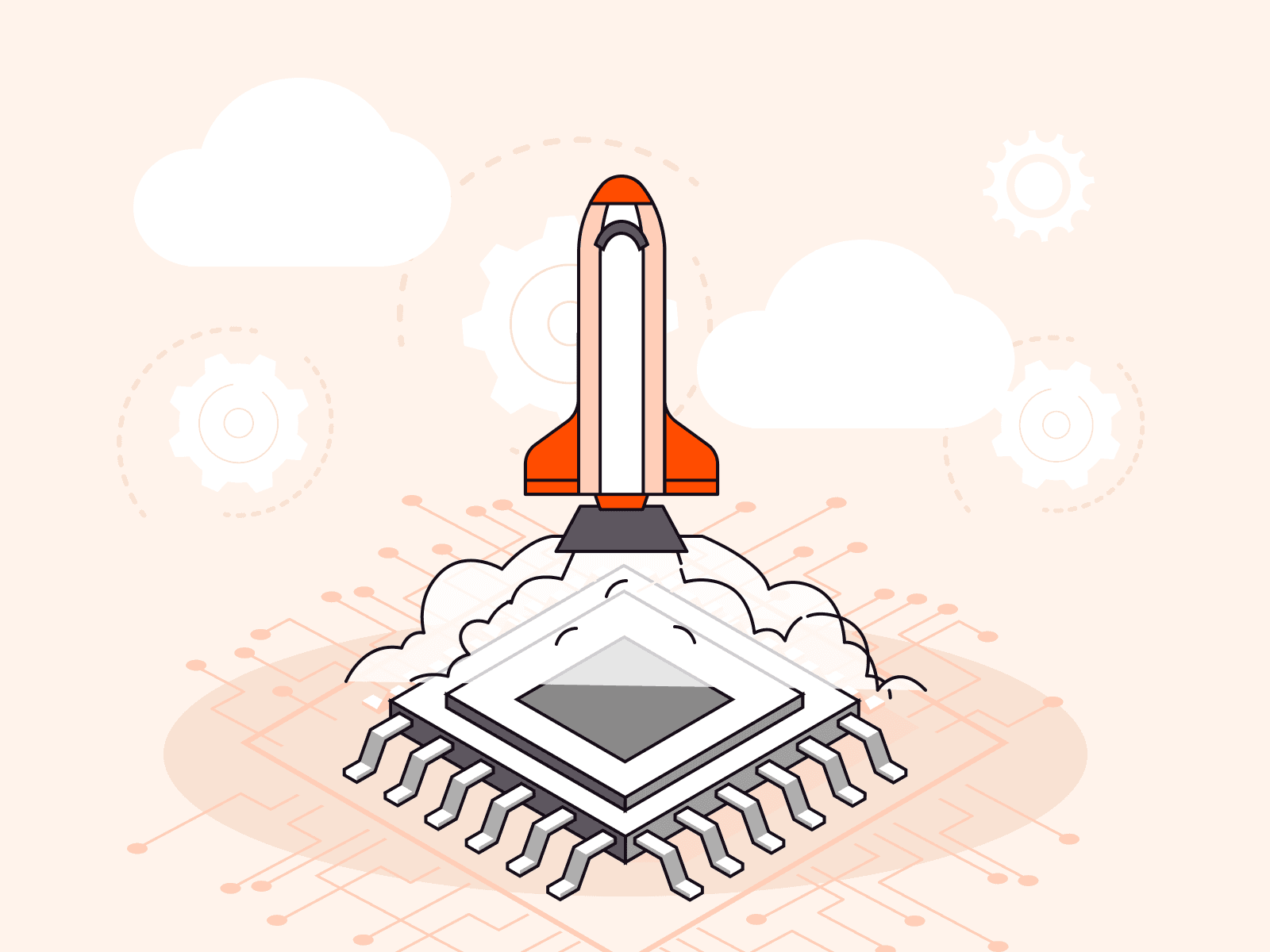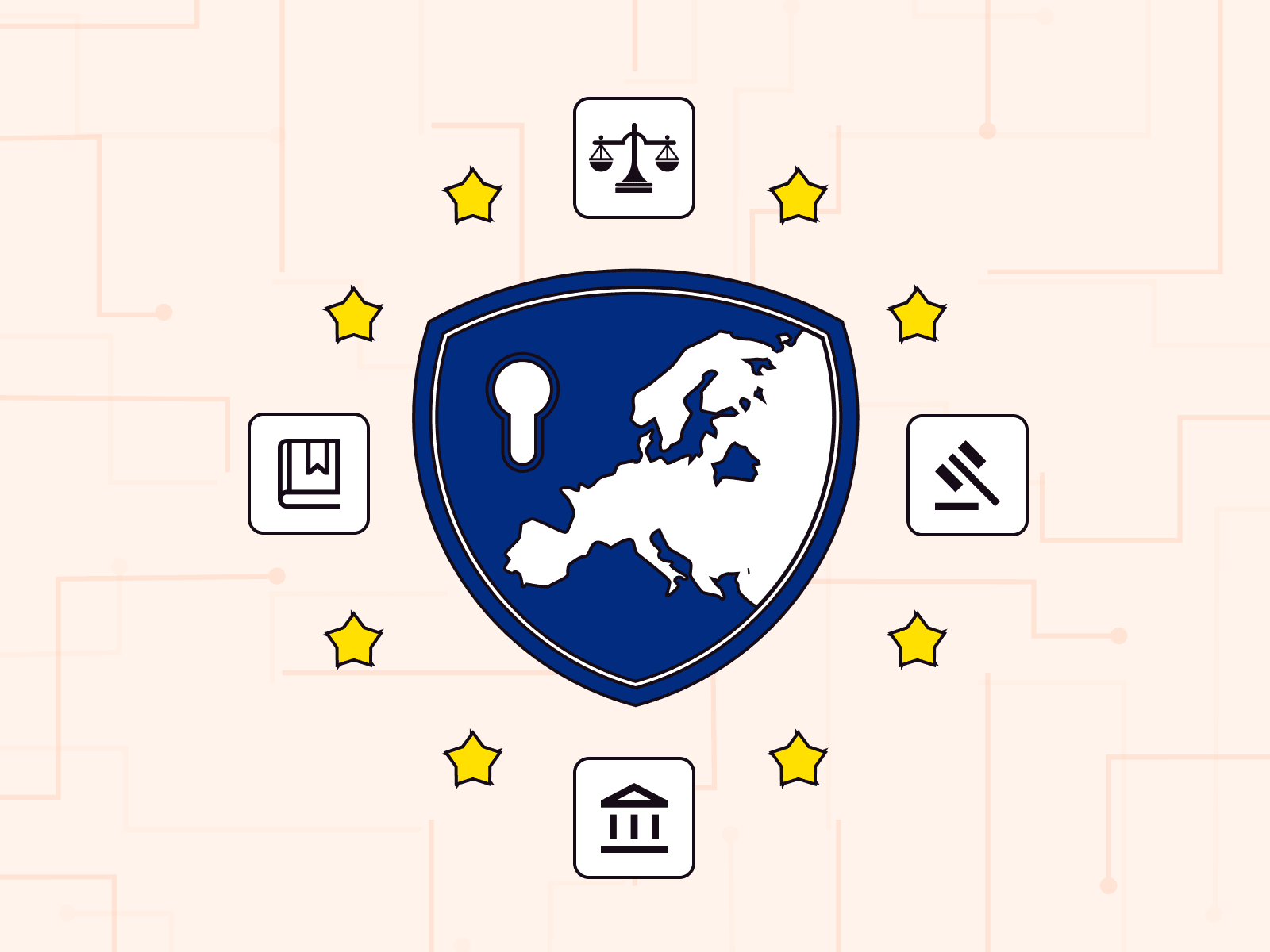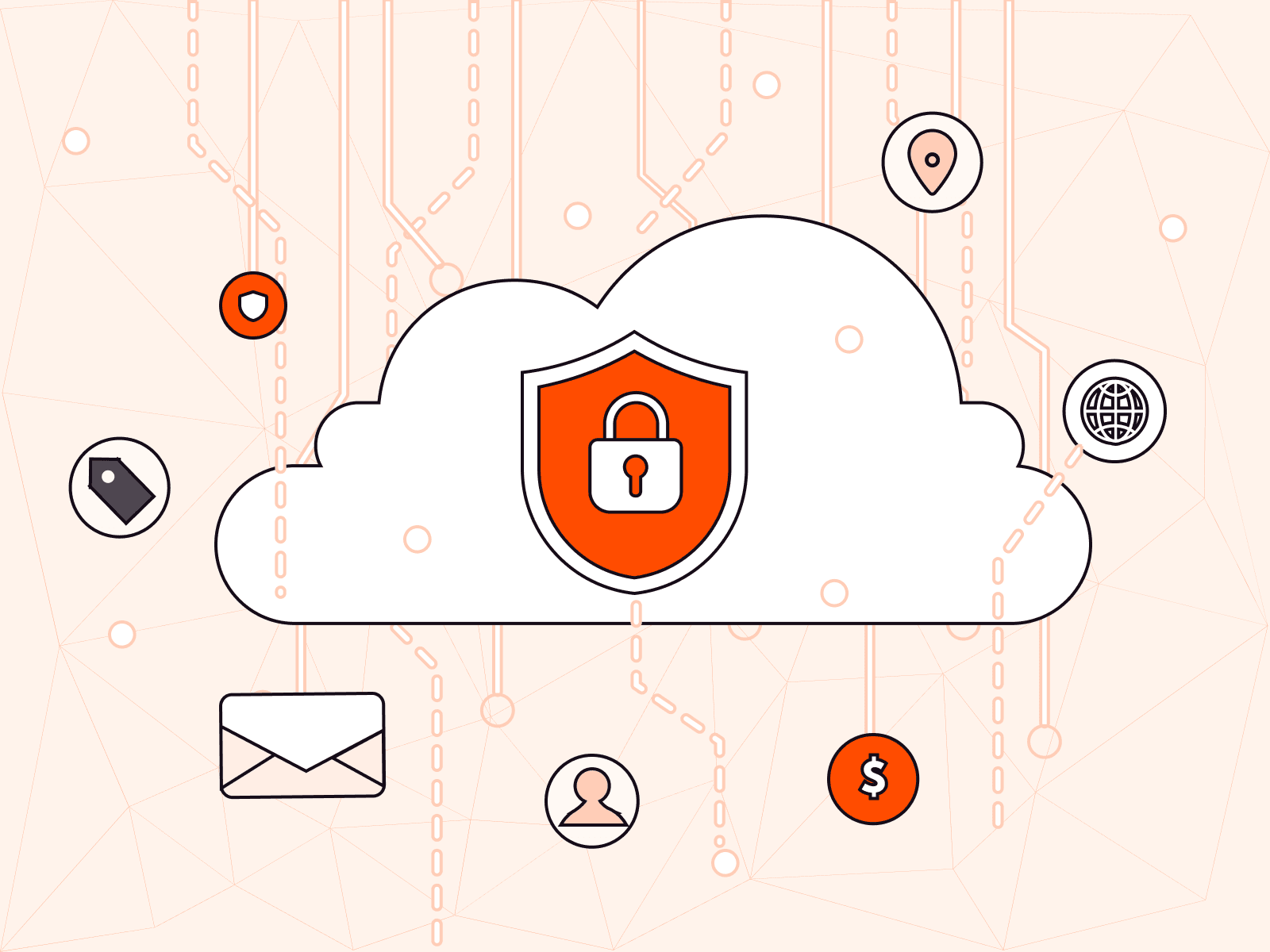Development trends of the metaverse and its infrastructure
- July 6, 2022
- 11 min read

The metaverse has been widely discussed lately. IT giants call it the future internet. But the ideas of what it will look like are different.
In this article, we will figure out what the metaverse is, how ideologists and large corporations see it, what prototypes of future 3D worlds are already available, and what the IT infrastructure should be for the “future internet.”
What is the metaverse?
There is no single definition of the metaverse. So far, there are only scattered ideas.
For example, the main ideologist of the metaverse, venture capitalist Matthew Ball, calls it a network of virtual 3D worlds visualized in real time that can be synchronously and continuously perceived by an unlimited number of simultaneous users with a sense of presence.
Meta defines the metaverse as a set of virtual spaces that users can create and explore together while being physically in different places.
Despite the differences in definitions, the general idea of the metaverse is essentially shared by everyone: a single virtual 3D environment that functions in real time.
This environment should be composed of 3D worlds. To interact with them, users will use avatars—their own digital copies. These avatars can be anything, from realistic portrait copies to fairy-tale characters with tails and wings. Avatars will be able to perform any social interaction: study, communicate, work, shop, play, and create.
In addition, the metaverse assumes the interconnection of the virtual world with the real one. For example, users will be able to virtually purchase real things (e.g., clothes, furniture, household goods), hold work meetings with colleagues in virtual reality, and play sports.
Broadly speaking, the metaverse is the future of the internet.
The metaverse as described by Matthew Ball
Matthew Ball formulated seven basic principles of the metaverse back in 2020:
- It should be continuous, without pauses and reloads.
- It should exist in real time, synchronously for everyone.
- It should have no restrictions on the number of users. At the same time, each user should have a sense of personal presence.
- It should have a working, internal economy. People should not only be able to spend money in the metaverse but also earn money, start their own business, invest, and sell.
- It should link both real and virtual life together. The metaverse should complement reality, not be an alternative to it.
- It should provide users with data compatibility. If a user has purchased clothes for their avatar in one game, they should also be able to use the same clothes in another game.
- It should be open to any creator or content maker, from ordinary amateurs to huge corporations.
In another essay, written in the summer of 2021, Matthew Ball says that it will be decades before the true metaverse emerges and identifies eight main “activators” by which its emergence can be judged.

Core enablers of the metaverse, according to Matthew Ball
1. Hardware. Physical technologies or devices for accessing, interacting with, or developing the metaverse. This category includes end-user devices (VR headsets, kinesthetic gloves, mobile devices) and complex equipment for creating VR and AR environments (industrial cameras, tracking systems).
However, this does not include the equipment for creating and maintaining the infrastructure of the metaverse—servers, processors, network equipment, etc. Matthew Ball attributes these to another category.
Hardware should allow users to fully immerse themselves into virtual worlds. Some such hardware items already exist, like VR headsets. Although, progress doesn’t stop, and many projects are actively in the works. For example, Meta has been developing gloves to reproduce tactile sensations for seven years. But creating real hardware for the metaverse still requires years of development. All the VR equipment that is available now is quite cumbersome, pretty inconvenient, and not yet capable of providing a fully interactive experience.
2. Networking. To make the virtual environment continuously available to an infinite number of users in real time, a tremendous network capacity is required. The network should provide huge bandwidth and fast, virtually delay-free, decentralized data transfer.
In this aspect, both the speed and bandwidth of the backbone data transmission and the “last-mile” delivery are important. The second task will probably be solved by 5G technologies, which are actively developing now.
3. Compute. This category includes servers, chips, processors, and all other technologies that provide high computing capacities.
The metaverse will require powerful edge computing, data reconciliation and synchronization, AI computing, Motion Capture, and so on. All this will require advanced equipment.
4. Virtual Platforms. These are the 3D worlds that users will be able to create and explore, worlds where users will be able to communicate, participate in various events, as well as purchase and sell things.
Prototypes of such worlds already exist in the form of multiplayer games—more about this below. But real virtual platforms will differ from traditional games by having a large ecosystem of developers who will create most of the platform’s content and receive most of its revenue. In other words, they should be much less centralized and constrained than the current one.
5. Interchange Tools & Standards. These include various services, protocols, formats, and technologies that will serve as standards for interaction within the metaverse and provide an opportunity for continuous improvement. They will allow the transfer of various elements from one 3D world to another, provide direct compatibility, and define development rules within virtual platforms.
6. Payment Services. The metaverse should have its own currency and payment processes. But this digital money should be associated with real, non-digital money.
Currently, this role is played by cryptocurrency and blockchain technologies. Most likely, they will become the main payment tool in the metaverse.
7. Content, Services, & Assets. This is all that relates to the creation, sale, resale, storage, financial protection, and management of assets (virtual goods and cryptocurrency). All this will involve user data in one way or another. Therefore, we need services and facilities that serve the metaverse but are not incorporated into virtual worlds.
8. User Behaviors. For the metaverse to emerge as it is imagined now, there must be a demand for it. Without user demand, nothing will work in virtual services and 3D worlds.
Users’ needs, habits, and interactions with the digital world and technology are gradually changing. In many areas of life, people have already moved online. But for the metaverse, the transition should go even further—into virtual reality.
The metaverse as seen by IT giants
The vision of large IT companies is, to a great extent, similar to that of Matthew Ball. But still, everyone envisions the future metaverse a little differently.
For example, Meta puts communication between people first. The metaverse will unite all of us, allow us to see our friends from different parts of the world, participate in online events, watch TV shows, play together, and so on. For these purposes, they are actively developing the Horizon platform—more about it a little later.
In his presentation, Mark Zuckerberg showed holograms of happy people going to concerts, shopping, and playing chess, table tennis, and sports together. Of course, the presentation was not only about entertainment but also about work. But the main message was that in the metaverse, people would have more opportunities to communicate “live,” turning it into a more interactive experience.
It can be said that Mark Zuckerberg’s metaverse is most similar to a comprehensive social network in virtual reality.
Microsoft, on the contrary, focuses on the business environment, digital copies of things, and interaction with them. Their metaverse is modeled after the real world, without Meta’s fantasy avatars.
Microsoft’s metaverse concept is mainly based on the idea of digital twins, which comes from the IoT world. The corporation is confident that in the future, in the metaverse, we will be able to use digital mapping and monitoring of everything real in the business environment: warehouses, stores, factories, and other facilities.
Metaverse users will be able to run a business in the VR environment, build projects, and develop new technological solutions.
And while Meta’s metaverse is a VR social network, Microsoft’s one is more of a 3D version of Microsoft Office with more global tasks.
Nvidia has a similar concept to Microsoft’s. They also rely on the idea of digital twins and are actively developing Omniverse, a modeling and designing platform where users can create digital copies of real things in virtual reality.
However, unlike Microsoft’s concept, Omniverse has avatars. Users can create smart virtual assistants to accelerate design.
Omniverse is based on Nvidia’s open-source Universal Scene Description technology, which they call 3D-HTML. The creators consider Omniverse to be a prototype of the metaverse and call it the 3D version of the web browser.
They see the future metaverse as a 3D internet with the widest possible user experience.
As a result, most companies discussing the metaverse now agree on one thing: It will be a global, ubiquitous, decentralized environment. Users will be able to use it to solve various tasks and interact, fully immersed in virtual reality.
However, full-fledged metaverses with complete immersion, rather than partial use of AR and VR, are still a work in progress.
What prototypes of the metaverse already exist
1. Gaming
This sphere was the first to go toward metaverses.
Fortnite is probably the most popular example of this when talking about the metaverse. It is a massively multiplayer online videogame released by Epic Games in 2017.
But it’s no longer just a game: Users can create avatars, chat with each other, participate in online events, and create their own content.
Fortnite has a creative mode where players can create an island and develop their own games on it, with their own decorations and rules. Moreover, other users can play these games, rate them, and support the creators financially.
One of the most notable events of 2020 was Travis Scott’s online Fortnite concert. It was a truly epic event. More than 27 million users attended it.
Fortnite often hosts various movie screenings. Users can watch movies and TV shows with their friends. For example, on May 26, 2020, the game hosted a movie night screening of Christopher Nolan’s most popular movies.
In the summer of 2021, the first realistic vehicle appeared in the game—a real controllable digital copy of the Ferrari 296 GTB, the first digital twin in the game’s world.
There are other similar online games: Roblox, VRChat, Sandbox, and Decentraland. In these games, users can also create avatars and build their own 3D worlds. At the same time, they can monetize their creations. And unlike Fortnite, these virtual platforms are more focused on creating content than gaming.
Sandbox and Decentraland even have their own Ethereum-based currency. They provide the option to purchase and sell NFTs on other platforms. Both platforms already call themselves metaverses. Although, of course, these are only prototypes at this point.
Despite the commercial component, all these platforms mainly have entertainment purposes. But their VR space can be used for other things than games.
2. E-commerce
The VR environment can be used to demonstrate and sell various physical things. We have few such examples yet, but we already have the first prototypes.
For example, the Balenciaga fashion house created a game to showcase its fall fashion collection—Afterworld: The Age of Tomorrow.
Users could select one of the characters and explore the virtual world. Along the way, they saw many photorealistic items from the fashion collection. Each item has been recreated as accurately as possible. At the same time, the collection items could be viewed both in a static position and in motion.
Advanced motion capture technologies were used to create digital copies of the items. As a result, the developers managed to reproduce such complex elements as reflective glasses, thin heels, and intricate design elements in an absolutely realistic way. All this could be viewed in 360°.
Balenciaga said that this project was the first step of the fashion industry towards the metaverse. The company believes that VR space is ideal for fashion shows, and many fashion houses will create similar projects in the near future.
3. Fitness
The sports industry is also starting to use VR technologies. The Supernatural platform is one such example. It is a special service for fitness in virtual reality. A VR headset is all that a user needs for a full-scale workout.
Users box, stretch, meditate, and do cardio workouts. In their workouts, users can select a personal virtual trainer and an environment in which to train. You can meditate on the summit of Machu Picchu or even on the surface of Mars.
You can connect Spotify to Supernatural and train to your favorite music.
4. Virtual events and work meetings
The VR space is perfect for online events. We’ve already mentioned Fortnite concerts and movie screenings. However, there are specialized platforms for such events.
For example, AltspaceVR is a platform for online meetings and events. You can create your own avatars, design your own 3D worlds, hold meetings with friends, and organize various events there.
Spatial is another similar platform. In terms of functionality, it is similar to AltspaceVR, but while AltspaceVR focuses on communication, this platform is focused on larger events and online exhibitions. In addition to 3D worlds and online events, Spatial users can create their own galleries and hold NFT exhibitions. NFTs can be sold, including to other platforms.
This platform is already calling itself the metaverse. Although, of course, this is also just a prototype.
Both platforms can be used for working meetings. But there is also a dedicated service for that—Horizon Workrooms. This is a Meta product that is currently in beta testing. The service allows colleagues to get together in one virtual room and discuss work issues as interactively as possible while being far from each other.
The platform has many useful features:
- Hand and keyboard tracking: You can bring your keyboard and desktop into virtual reality.
- Sharing your computer screen with other users.
- Video call integration: You can connect to a virtual room with a VR headset and via a standard call.
- A virtual whiteboard where meeting participants can write, attach various files from their computers, etc.
- The virtual room is configured according to the needs of users.
In such a virtual space, it is much more convenient to work together on projects than through ordinary video calls.
Meta is actively developing Horizon. In addition to Workrooms, it includes:
- Horizon Home: A virtual space where users can set up their virtual room, launch various applications, and communicate with friends. Some features have already been implemented, and some are undergoing beta testing. Meta intends to release the full version in 2022.
- Horizon Worlds: A platform where users can create their own virtual spaces and games. The service has been available since December 2021.
- Horizon Venues: A platform for online events in virtual reality. This service is also already available to all users.
In the future, Meta plans to turn Horizon into a single platform with the widest possible set of features, where users can play, work, communicate, watch TV series, and attend virtual concerts.
5. Development and design
This is another area that is already starting to use VR. We have already mentioned that online multiplayer games allow players to develop their own content. But all this is done in an individual, author mode and only within one game.
But VR capabilities can be used very well on an industrial scale, for example, when designing any physical objects: buildings, architectural structures, and large mechanisms. So far, there are few real examples. The first prototype that we can name in this area is Nvidia’s Omniverse platform which we mentioned before.
This is an open platform for collaboration (design, modeling) in a virtual environment in real time. Omniverse is aimed at designers, engineers, architects, artists, and other professionals who need to combine work tools and creative efforts to collaborate on projects.

How Omniverse works
In January 2022, the platform completed beta testing and went public. At that time, Omniverse was used by about 100,000 developers.
Within the platform, you can create 3D models, use ready-made 3D scenes from libraries, and import data from third-party applications for collaboration with other designers.
As you can see, metaverse prototypes already exist in various business areas, not only in the gaming industry. And in the future, there will be more such virtual platforms, and their functions and capabilities will be expanded.
How quickly will prototypes become real metaverses?
Currently, the full-fledged development of the metaverse is hampered by several factors:
- Limitations on computing capacities for end-user devices
- Lack of a unified, decentralized infrastructure
- Limitations on computing capacities for building this infrastructure
- Economic and legal issues related to end-to-end use of assets and other difficulties
But technology is constantly evolving and the VR service market is growing.
At the moment, it is hard to say when the real metaverse will appear and whether the predictions of its ideologists will come true. But all the trends show that we are on the verge of big changes online.
But for all these predictions to come true, you need impressive computing capacities. As an experienced IT company, we understand that any digital project is always based on a productive IT infrastructure. No 3D world can exist without computing capacities and services that ensure its interactivity and uninterrupted operation.
Gcore Labs cloud infrastructure for the metaverse
At Gcore Labs, we focus on providing the technology base for future 3D worlds.

We are currently working on a cloud platform for the metaverse that will include all the necessary services and technologies.

Structure of the Gcore Labs cloud platform for the metaverse
We do not have a 100% ready infrastructure for the metaverse, but the metaverse itself does not exist yet. The infrastructure for 3D worlds will develop together with the 3D worlds themselves; new technologies and solutions will appear.
We can now offer services that can solve the problems of both existing virtual platforms and the metaverse prototypes under development.

| Metaverse needs | Gcore Labs services |
| Global Gcore Labs CDN:
|
| Technology Cloud:
|
And that’s just the beginning. We are developing our own CDN and Cloud platforms to meet the needs of the future metaverse to the fullest extent.
Summary
- The metaverse is a unified virtual 3D environment that functions in real time. There is no unified format yet, but many large companies are calling it the future internet.
- The main ideologist of the metaverse, Matthew Ball, identifies seven of its main principles: to be constant, exist in real time, have no restrictions on the number of users, have a working, internal economy, connect real and virtual life, provide users with data interoperability, and be open to any content maker.
- The ideas of other ideologists and IT giants partially coincide with those of Ball, but everyone has their own vision.
- There are still years of development before the real metaverse can appear. But its prototypes already exist. 3D worlds are evolving not only in games but also in other areas—for example, fitness, fashion, and the event industry.
- For these prototypes to become a real metaverse, a powerful IT infrastructure is needed that will meet all the requirements of the “future internet.”
- We at Gcore Labs can already offer services that solve many problems of the future metaverse and existing prototypes.
Our infrastructure and services are ready for the next step of internet development. Let’s build the metaverse together. Tell us about your plans for the development of 3D worlds, and we will help you implement them.
Related articles
Subscribe to our newsletter
Get the latest industry trends, exclusive insights, and Gcore updates delivered straight to your inbox.






